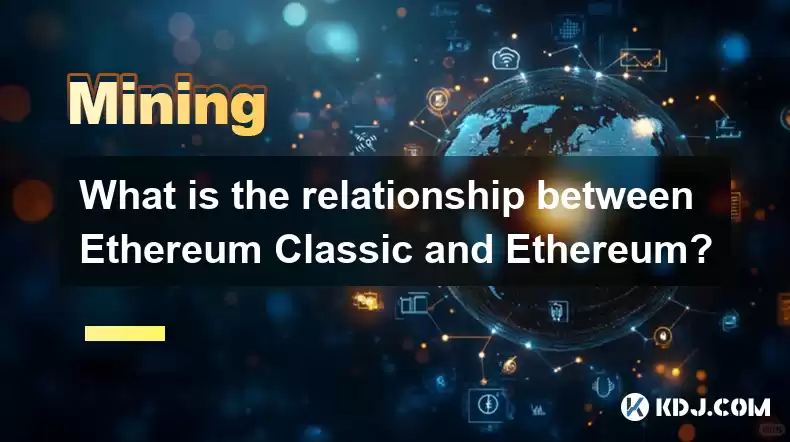-
 Bitcoin
Bitcoin $116400
-0.36% -
 Ethereum
Ethereum $4033
3.40% -
 XRP
XRP $3.302
-1.26% -
 Tether USDt
Tether USDt $1.000
-0.02% -
 BNB
BNB $796.1
1.67% -
 Solana
Solana $177.8
1.89% -
 USDC
USDC $0.9999
0.00% -
 Dogecoin
Dogecoin $0.2314
4.09% -
 TRON
TRON $0.3381
0.14% -
 Cardano
Cardano $0.7989
1.22% -
 Stellar
Stellar $0.4496
-1.84% -
 Chainlink
Chainlink $20.42
9.42% -
 Hyperliquid
Hyperliquid $41.17
0.88% -
 Sui
Sui $3.914
3.77% -
 Bitcoin Cash
Bitcoin Cash $584.7
1.52% -
 Hedera
Hedera $0.2632
-0.54% -
 Avalanche
Avalanche $24.09
3.40% -
 Ethena USDe
Ethena USDe $1.001
-0.02% -
 Litecoin
Litecoin $123.2
1.33% -
 Toncoin
Toncoin $3.318
-0.04% -
 UNUS SED LEO
UNUS SED LEO $8.984
-0.05% -
 Shiba Inu
Shiba Inu $0.00001323
2.85% -
 Uniswap
Uniswap $10.90
4.41% -
 Polkadot
Polkadot $3.999
3.34% -
 Dai
Dai $1.000
0.01% -
 Cronos
Cronos $0.1630
9.64% -
 Bitget Token
Bitget Token $4.484
0.82% -
 Monero
Monero $272.4
2.44% -
 Pepe
Pepe $0.00001173
6.03% -
 Aave
Aave $290.8
2.88%
What is the relationship between Ethereum Classic and Ethereum?
Despite sharing a historical foundation, Ethereum Classic and Ethereum diverged after a hard fork in 2016, leading to distinct technical approaches, community dynamics, and transaction replay protection mechanisms.
Feb 26, 2025 at 07:30 am

Ethereum Classic vs. Ethereum: Key Points
- Historical Origins: Ethereum Classic is the original blockchain that emerged from the Ethereum project, while Ethereum represents the fork that was created in response to the DAO hack in 2016.
- Forking Event: The DAO hack led to a split within the Ethereum community, with some developers advocating for a hard fork that would reverse the hack, and others supporting a more conservative approach. The hard fork resulted in the creation of Ethereum, while the original chain continued as Ethereum Classic.
- Technical Differences: Ethereum Classic adheres to the original Ethereum protocol, retaining its proof-of-work (PoW) consensus mechanism. Ethereum, on the other hand, has undergone several upgrades, including the switch to a proof-of-stake (PoS) mechanism in 2022.
- Transaction Replay Protection: To prevent replay attacks after the fork, Ethereum implemented a mechanism to invalidate transactions replayed on both chains. This ensures that transactions executed on one chain are not valid on the other.
- Community Support: Ethereum Classic has a dedicated community that values the stability and immutability of the original Ethereum blockchain. Ethereum has a much larger and more active community, supported by a wide network of developers, miners, and ecosystem participants.
Comprehensive Guide to the Relationship between Ethereum Classic and Ethereum
Historical Origins
Ethereum Classic originated as the foundation of the Ethereum project, conceptualized in 2013 by Vitalik Buterin. The Ethereum blockchain was launched in 2015, introducing a revolutionary platform for decentralized applications. However, in 2016, a critical event occurred known as the DAO hack, which compromised millions of ETH from the decentralized autonomous organization (DAO) smart contract.
Forking Event
The DAO hack triggered a heated debate within the Ethereum community. Some members advocated for a hard fork, which would essentially rollback the blockchain to a state before the hack, reversing its consequences. Others, including Buterin, supported a more conservative approach, arguing that modifying the blockchain would undermine its immutability and decentralization.
The conflicting perspectives led to a split in the Ethereum community, resulting in the creation of two separate blockchains. The blockchain that followed the hard fork became Ethereum, while the original chain remained as Ethereum Classic. This fork marked a pivotal moment in the history of Ethereum, shaping its evolution and the relationship between the two chains.
Technical Differences
Ethereum Classic has maintained the original Ethereum protocol, which employs a proof-of-work (PoW) consensus mechanism. This mechanism relies on miners to secure the network by validating transactions through intensive computational power. Ethereum, on the other hand, has undergone significant upgrades since the fork, including the transition to a proof-of-stake (PoS) consensus mechanism in 2022.
PoS shifts the validation process from miners to validators, who stake their ETH to support the network and earn rewards for validating blocks. This approach reduces the energy consumption and environmental impact associated with PoW, while potentially enhancing scalability and security.
Transaction Replay Protection
Following the fork, a crucial challenge emerged: preventing replay attacks. Replay attacks involve replaying a transaction on one chain after it has been executed on the other, potentially leading to duplicate execution and unintended consequences.
To address this issue, Ethereum implemented a replay protection mechanism. Transactions executed on Ethereum are marked with a unique identifier that is then rejected on Ethereum Classic. Similarly, transactions on Ethereum Classic bear a distinct identifier that is invalid on Ethereum. This mechanism ensures that transactions remain valid only on their respective chains, preventing potential fraud or double-spending.
Community Support
Ethereum Classic is supported by a dedicated community that values the stability and immutability of the original Ethereum blockchain. They prioritize preserving the integrity and decentralization of the platform, emphasizing its potential as a secure and reliable foundation for decentralized applications.
Ethereum, on the other hand, has amassed a significantly larger and more active community. The Ethereum ecosystem consists of a diverse network of developers, miners, businesses, and enthusiasts who contribute to its growth, innovation, and adoption. The extensive ecosystem support fuels the development of new applications, tools, and services,
Disclaimer:info@kdj.com
The information provided is not trading advice. kdj.com does not assume any responsibility for any investments made based on the information provided in this article. Cryptocurrencies are highly volatile and it is highly recommended that you invest with caution after thorough research!
If you believe that the content used on this website infringes your copyright, please contact us immediately (info@kdj.com) and we will delete it promptly.
- HAT Token Mania: Price Surges, Crypto Auctions, and Meme Coin Mayhem
- 2025-08-09 11:10:11
- Undervalued Cryptos Primed for a 2025 Takeoff: MAGACOIN, TRX, and SUI Lead the Pack
- 2025-08-09 11:10:11
- Bitcoin Goes to Harvard: Ivy League Embraces Digital Assets
- 2025-08-09 10:50:12
- Bitcoin, BlockDAG, and Toncoin: Decoding the Crypto Buzz in NYC
- 2025-08-09 11:30:11
- XRP, Pi Network, and Binance Listing Buzz: What's the Hype?
- 2025-08-09 11:30:11
- Arctic Pablo Coin: The Meme Coin Presale Promising High ROI in Q3 2025
- 2025-08-09 10:50:12
Related knowledge

What is "proof-of-work" and how does it relate to mining?
Aug 07,2025 at 02:03pm
Understanding the Concept of Proof-of-WorkProof-of-work (PoW) is a consensus mechanism used in blockchain networks to validate transactions and secure...

What are the differences between mining on Windows vs. Linux?
Aug 06,2025 at 11:29pm
Overview of Cryptocurrency Mining PlatformsCryptocurrency mining involves using computational power to solve complex cryptographic puzzles and validat...

How to use an old computer for cryptocurrency mining?
Aug 07,2025 at 12:42pm
Understanding the Feasibility of Using an Old Computer for MiningUsing an old computer for cryptocurrency mining may seem outdated, but it is still te...

Can you mine cryptocurrency using solar power?
Aug 07,2025 at 12:00am
Understanding the Basics of Cryptocurrency MiningCryptocurrency mining involves validating transactions on a blockchain network by solving complex cry...

How to monitor your mining rig's temperature and stability?
Aug 09,2025 at 09:43am
Understanding the Importance of Temperature Monitoring in Mining RigsMaintaining optimal temperature levels in a mining rig is essential for long-term...

How to build a mining rig inside a PC case?
Aug 06,2025 at 11:01pm
Understanding the Basics of a Mining Rig in a PC CaseBuilding a mining rig inside a PC case involves transforming a standard computer chassis into a d...

What is "proof-of-work" and how does it relate to mining?
Aug 07,2025 at 02:03pm
Understanding the Concept of Proof-of-WorkProof-of-work (PoW) is a consensus mechanism used in blockchain networks to validate transactions and secure...

What are the differences between mining on Windows vs. Linux?
Aug 06,2025 at 11:29pm
Overview of Cryptocurrency Mining PlatformsCryptocurrency mining involves using computational power to solve complex cryptographic puzzles and validat...

How to use an old computer for cryptocurrency mining?
Aug 07,2025 at 12:42pm
Understanding the Feasibility of Using an Old Computer for MiningUsing an old computer for cryptocurrency mining may seem outdated, but it is still te...

Can you mine cryptocurrency using solar power?
Aug 07,2025 at 12:00am
Understanding the Basics of Cryptocurrency MiningCryptocurrency mining involves validating transactions on a blockchain network by solving complex cry...

How to monitor your mining rig's temperature and stability?
Aug 09,2025 at 09:43am
Understanding the Importance of Temperature Monitoring in Mining RigsMaintaining optimal temperature levels in a mining rig is essential for long-term...

How to build a mining rig inside a PC case?
Aug 06,2025 at 11:01pm
Understanding the Basics of a Mining Rig in a PC CaseBuilding a mining rig inside a PC case involves transforming a standard computer chassis into a d...
See all articles

























































































